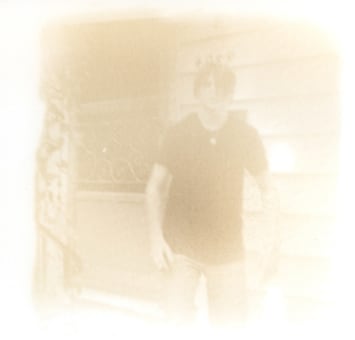It really took me ten years to figure out what I was doing—and then it came—all of a sudden on a random summer day in 2012 while listening to a song by Paul Westerberg full of sympathetic lyrics about the suicide of the poet Sylvia Plath. Every line of the song resonated, but especially the refrain, “Can you hear her blacks crackle and drag?” That one challenging question provided me with the necessary focal point I had been lacking. What can we understand about another person’s suffering? And what is the value of that understanding both for ourselves and for others? That question has driven my life and work ever since.
-
TR Ericsson: All My Love
Art Brussels, 2024 -

Art Student’s League (portrait study), (Sad Young Man on a Train #102), Oil Paintings 1992-2002, 2022,
oil on linen, 35.6 x 30.5 cm.
-
 Thirst Magazine, 2001 - 2009, various media
Thirst Magazine, 2001 - 2009, various media -

Vodka, resin and metallic silkscreen ink on cradled gessoed panel
152.4 x 213.4 cm
60 x 84 in, -

Crackle & Drag Zine Box Set, 2013
150 zines with a custom Plexiglass box, printed card listing each title. Digital offset.
Edition of 10 plus 2 AP
All My Love Always No Matter What, 2023
Digital Offset, Seven volumes housed in a plexi slipcase
Edition of 3 plus 2 AP
-
 BrideNicotine on panel152.4 x 121.9 cm
BrideNicotine on panel152.4 x 121.9 cm
60 x 48 in -
Tom & Sue
“Tom & Sue” began with the source photo for the painting “Angel of the Morning” and builds around it. This work is a dialogue between Ericsson and his memory. A mother’s letters to her son. A son’s letters to his mother. Photographs and memories, fragments of dreams, notes and ideas, passages from books or songs, all of it now suspended in a cocktail of ashes and graphite and resin, spilled alcohol and cigarette burns; a chaotic, even disorienting map of time, place, people and cultural connotations. Once completed the work was drenched in cheap alcohol and dried in the sun. Lit cigarettes were left to fall onto it, as if forgotten in an ashtray until they slipped off the table to leave their mark. The stains intensify in the humidity of the booze, an unpredictable choreography of love and abuse. Like Rumi, the Persian poet writes, “we drink people, they drink us.” What and who are we after we’ve drunk one another? Living or dead, the intoxicating impact of love goes on. -

I Love You Totally All the Time and Always Will
Bronze (letter) installation








